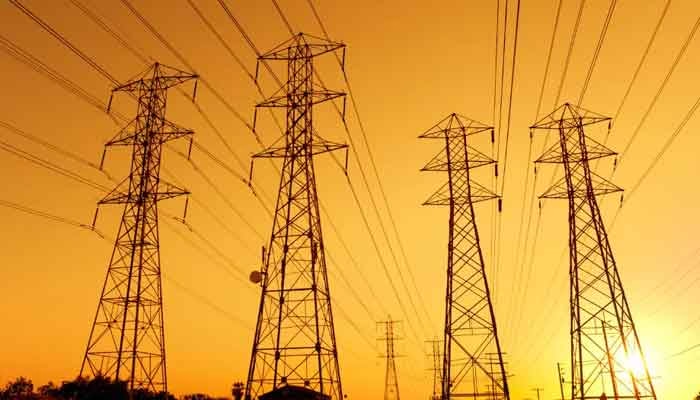The federal government has unveiled a transformative plan to auction surplus electricity to consumers for two to three years. This innovative approach aims to address the persistent issue of underutilized energy resources while reducing the financial burden on the power system.
A Strategic Move to Utilize Excess Power
Officials from the Ministry of Power shared that under this scheme, the government will first establish a reference price for electricity. Interested parties, including industrial and commercial sectors, will be invited to bid above the reference price through an auction mechanism.
This plan is expected to:
- Optimize the use of surplus electricity.
- Generate revenue from otherwise idle energy capacity.
- Alleviate the financial strain caused by capacity payments for unused power.
The initiative reflects the government’s commitment to improving energy efficiency and enhancing the sustainability of Pakistan’s power sector.
The Current State of Pakistan’s Power Sector
Pakistan’s installed electricity generation capacity has reached a staggering 45,888 MW. However, the system faces significant limitations:
- Peak Demand: During summer, electricity demand soars to 29,000 MW, but the system can only deliver 26,000 MW due to transmission constraints.
- Average Demand: Monthly electricity demand averages between 11,000 MW and 12,000 MW, leaving a substantial portion of installed capacity underutilized.
To bridge this gap, the government plans to auction surplus electricity, especially targeting industrial consumers who require consistent and affordable power.
Regional Challenges in Power Distribution
One of the major hurdles in Pakistan’s energy sector is the uneven distribution of power:
- Southern Regions: These areas have access to cheaper electricity, but due to transmission limitations, it cannot be transported to Punjab, the primary load center.
- Capacity Payments: Despite having unused capacity in the southern regions, the government continues to pay for this electricity, further straining financial resources.
By auctioning this surplus power locally, the government aims to:
- Reduce the financial burden of capacity payments.
- Enable consumers in the south to access affordable electricity.
- Promote regional energy utilization.
Industrial Sector as a Key Beneficiary
The industrial sector, a major driver of Pakistan’s economy, is poised to benefit significantly from this initiative. Access to surplus electricity at competitive prices will:
- Enhance productivity.
- Reduce operational costs.
- Encourage industrial growth and investment.
This aligns with the government’s broader vision of fostering economic development through energy optimization.
Transition to a Competitive Power Market
Another cornerstone of the government’s energy strategy is the establishment of a Competitive Trading Bilateral Contract Market (CTBCM). The implementation timeline includes:
- Wholesale Private Power Market (March-April):
- Aimed at enabling independent power producers (IPPs) to sell electricity directly to consumers without government intermediaries.
- Retail Private Power Market:
- Planned as a subsequent phase to allow greater consumer choice and market-driven pricing.
Once operational, the CTBCM will:
- Reduce the government’s role in purchasing electricity from IPPs.
- Promote competition among power producers.
- Lower electricity costs for consumers by fostering a competitive environment.
Addressing Long-Standing Issues
The government’s plan addresses critical challenges that have plagued Pakistan’s energy sector for years:
- Underutilization of Installed Capacity: By auctioning surplus electricity, idle power plants will generate revenue instead of incurring losses.
- Transmission Bottlenecks: While infrastructure upgrades are necessary, this interim solution ensures that available energy is put to good use.
- Financial Sustainability: Reducing capacity payments and encouraging private sector participation will ease the financial burden on the national exchequer.
A Vision for Energy Optimization
This initiative is part of a broader effort to modernize Pakistan’s energy sector. Key goals include:
- Expanding renewable energy sources to diversify the energy mix.
- Upgrading transmission and distribution networks to minimize losses.
- Encouraging private sector investment to drive innovation and efficiency.
Challenges and the Road Ahead
While the plan holds immense promise, its success depends on:
- Efficient Implementation: Transparent auction processes and timely execution are crucial.
- Regulatory Reforms: Clear policies and streamlined procedures will build investor confidence.
- Infrastructure Development: Addressing transmission constraints remains a long-term priority.
Pakistan’s plan to auction surplus electricity represents a significant step toward energy optimization and economic growth. By leveraging unused capacity, reducing financial burdens, and fostering competition, the government is paving the way for a more efficient and sustainable power sector.
As this initiative unfolds, it promises to transform the energy landscape, making electricity more accessible and affordable for consumers while promoting industrial growth and national prosperity.



